Geosciences for a sustainable future
Torino, 19-21 settembre 2022
Field Trips
Pre Congress field trips
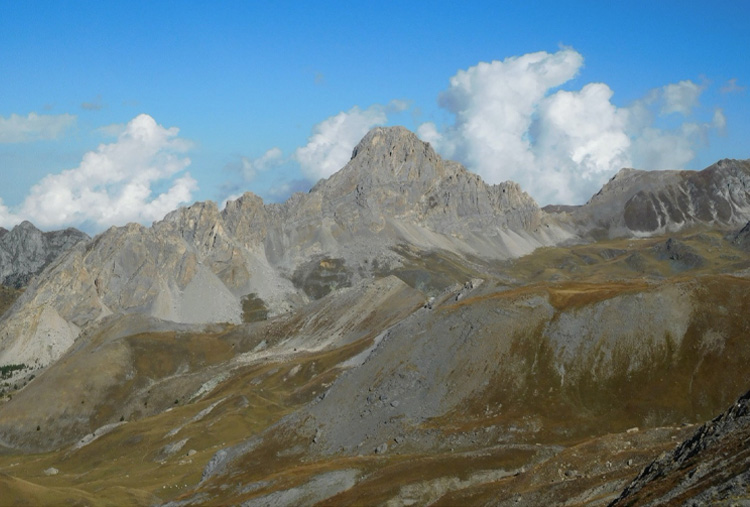
FT1. The external domains of SW Alps: from the Pennidic front to the Argentera Massif NE-boundary faults
Field leader(s): Luca Barale [CNR-IGG, Torino], Carlo Bertok [Università di Torino], Anna d'Atri (Referent) [Università di Torino], Luca Martire [Università di Torino], Pietro Mosca [CNR-IGG, Torino], Fabrizio Piana [CNR-IGG, Torino]
Itinerary: Torino- Ponte Marmora (Maira valley) - Altopiano della Gardetta - Stura valley - Valdieri -Torino
Date: 16-17-18 September 2022
Duration: 3 days (2 nights)
Costs (all included): € 220
The trip runs mostly through the Mesozoic sedimentary and metasedimentary successions of the of SW Alps (Southern Cottian Alps). It starts from the Pre-Piemontese, Acceglio and Internal Briançonnais units and, going through the Pennidic front zone, it enters the External Briançonnais, Dauphinois and Provençal domains, as well as the Eocene-lower Oligocene Alpine foreland basin succession. Magnificent rock exposures in a karstic highland geomorphology (Gardetta plateau) and deep fluvial gorges (high Stura Valley) allows to compare the tectono-metamorphic evolution of the more internal units vs. the external ones and to interprete the Alpine tectonic setting and sedimentary evolution in the frame of transpressional tectonics, at the southern termination of Western Alps arc. The trip is also dedicated to the extensive fault rock masses placed along the Argentera NE boundary faults, while the last part is dedicated to the observation and discussion of some peculiar petrogenetic processes, related to geothermal fluid circulation, which occurred during Alpine and pre-Alpine tectonics (e.g., Valdieri Marble, Gesso Valley).
Further indications: 10 (min) to 20 participants, rented outdoor vehicles, no track difficulties as the trip is run mostly by car, medium mountain clothing, accommodations in hotels with dinner and packed lunch.
Post Congress field trip
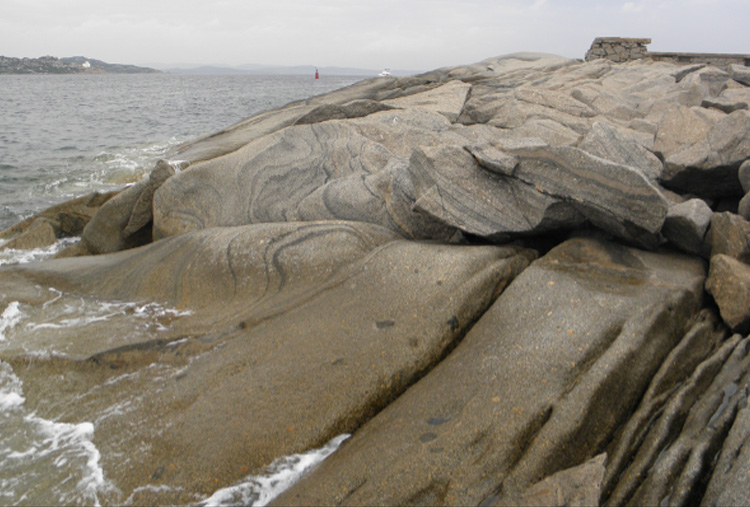
FT2. The Variscan section of N Sardinia: the migmatite-granite connection
Field leader(s): Leonardo Casini [Università di Sassari], Giovanni Luca Cardello [Università di Sassari], Fabrizio Cocco [Università di Cagliari], Antonio Funedda [Università di Cagliari], Giacomo Oggiano [Università di Sassari]
Itinerary: Olbia (SS) – Bitti (NU) – Tempio P. (SS)/Aggius (SS) – S. Teresa di Gallura (SS) – Olbia (SS)
Date: 22-23-24 September 2022
Duration: 3 days
Costs (all included): € 270
The field trip is dedicated to the Variscan basement of northern Sardinia, with a special focus on the migmatite-granite transition zone and related synmagmatic deformation structures. Northern Sardinia shows an almost complete section of lower to middle crust, from migmatites and paragneisses with relic HP assemblages to LP-HT migmatites, and granites. The HP evolution, tentatively correlated with Devonian-early Carboniferous subduction, preserve poor structural evidences because of extensive re-equilibration during a subsequent, late-Carboniferous/early-Permian HT-LP event ending up with the emplacement of the Corsica-Sardinia Batholith.
The excursion will start from a middle crustal section of amphibolite-facies orthogneiss, paragneisses and micaschists with relicts of HP assemblages. The metamorphic rocks are intruded by several late Carboniferous and Permian calc-alkaline plutons with excellent exposures showing the architecture of middle-crustal magma chambers. The field trip continues moving toward the lower part of the crustal section, i.e., the source zone of granitic melts. The second day will be fully dedicated to a huge migmatitic massif exposing a continuous metatexite-diatexite-granite transition. The outcrops are set in a nice marine context, offering superb 3D expositions of a quenched melt extraction zone. The last day is dedicated to an early Permian sub-alkaline volcanic-plutonic complex that ideally marks the end of the Corsica-Sardinia Batholith.
Further indications: The trip consists of a round journey starting from, and ending in, Olbia (SS), which is easily connected to several Italian and European cities by daily flights and boats. The transfer of participants (min 15 – max 30 persons) from and to the airport, as well as between the stops, will be accommodated by minibuses. Most stops are close to the roads or to the beach, thus they are easily accessible and require minimal trekking attitude and standard field work equipment (i.e., comfortable clothes, trekking shoes, a light backpack). The second half of September in Sardinia is usually warm and dry and most stops of the second day will be around a cliff overlooking the nice sea of S. Teresa di Gallura (SS), so don't forget your swimsuit. Overnight stays and dinners will be in the Muto di Gallura (SS), a famous agritourism located in a strategical position close to several magnificently exposed granitic and migmatitic massifs. Packed lunch and water will be provided by the organization.
The FT2 field trip represents the annual field excursion held by GIGS, the SGI-session dedicated to Structural Geology and Tectonics.
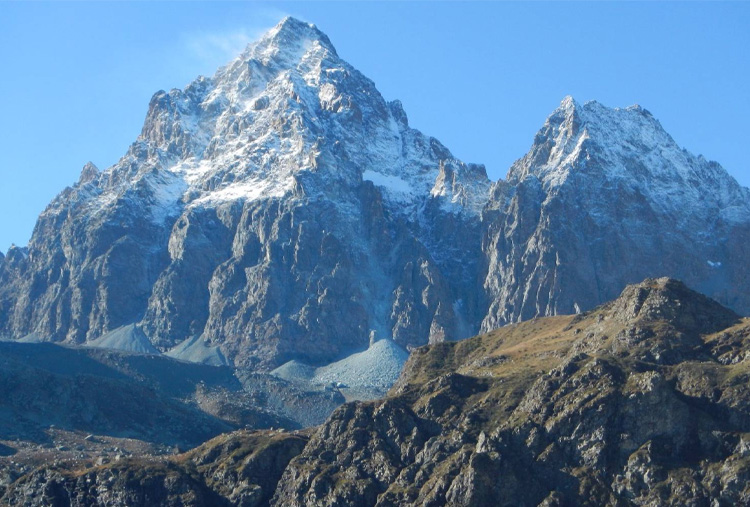
FT3. The Monviso meta-ophiolite Complex
The meeting point is Torino Esposizioni, the venue for the congress, on Sept 22, at 07:45; departure of the bus strictly at 08:00. Return is planned not later than 19:30, at the same Torino Esposizioni.
Participants are invited to check the Geological Field Trip, Volume 6 (1.3)/2014, focusing on the Day 1-Itinerary (pp. 8-35).
Field leader(s): Daniele Castelli [Università di Torino], Simona Ferrando [Università di Torino], Chiara Groppo [Università di Torino], Franco Rolfo [Università di Torino]
Itinerary: Torino - Pian del Re (Valle Po) - Torino
Date: 22 September 2022
Duration: 1 day
Costs (all included): € 50
The Monviso Massif is one of the best preserved relics of oceanic crust in the western Alps that formed during opening of the Mesozoic western Alpine Tethys and that underwent HP metamorphism during Alpine subduction. This fieldtrip gives the almost unique chance to see and appreciate different portions of the ancient ocean along a mountain trail. Among the various lithologies, we will see serpentinites, Mg-Al and Fe-Ti metagabbros, eclogites, metabasites, metasediments and minor metaperidotites. Metamorphic and metasomatic processes occurred during subduction and/or during the following exhumation are exceptionally well preserved in most of them. The field trip itinerary is located in a high mountain landscape in front of the pyramid of Monviso (3841 m), which is the symbol of the Cottian Alps. The excursion will start from the spring of the Po river at Pian del Re and will reach three spectacular mountain lakes (Lago Fiorenza, Lago Chiaretto and Lago Superiore), through a typical glacial landscape.
Further indications: Min e max number of participants: 15 - 30
Type of vehicles : regular touristic bus from Torino to Crissolo; minibus from Crissolo to Pian del Re; 500 m elevation gain by foot.
Track difficulty, clothing: the fieldtrip will follow a mountain path at altitudes between 2000 and 2500 m a.s.l.; consequently, good physical shape, mountain boots, sun glasses, and sun-tan lotion are strongly recommended, as well as warm, water- and windproof clothes, since weather can change rapidly.
Registration fee includes: travel costs, packed lunch, tourist tax.
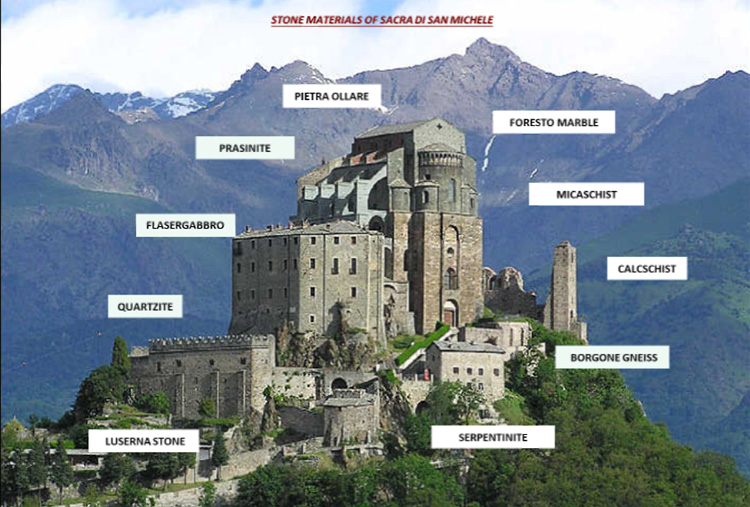
FT4. Stones, heritage and infrastructures: a sustainable way to experience the landscape
Field leader(s): Luca Barale [CNR-IGG, Torino], Alessandro Borghi [Università di Torino], Giovanna Antonella Dino [Università di Torino], Pietro Mosca [CNR-IGG, Torino], Marco Pantaloni [ISPRA Roma]
Itinerary: Torino-Sacra di San Michele (Sant'Ambrogio) - Susa-Oulx - Cesana Torinese - Torino
Date: 22 September 2022
Duration: 1 day
Costs (all included): € 60
The Susa Valley, carved by a prolonged glacier erosion in the core of the Italian western Alps, has been used since classical era as a major communication route between Po Plain region and France, up to Europe at large: it represents a natural way through the Alpine passes. It exposes a section of metamorphic geologic units of continental and oceanic pertinence: several amazing types of ornamental and building stones were, and still are, exploited for heritage purposes and for local infrastructures.
Running the Susa Valley from its lower to upper part, the field trip aims to illustrate the geological-geomorphological features of this valley and to discuss the main steps of the geological studies during the 19th -early 20th centuries in this alpine sector, fundamentals for the geological interpretation of the entire western Alps.
During the field trip, the variety of ornamental stones (meta-ophicarbonate, prasinite, marble, gneiss and quartzite among the others) of the Susa Valley will be shown thanks to outcrops and abandoned quarries and visiting famous historical buildings, such as the Sacra di San Michele (a medieval abbey considered the symbol of Piemonte Region) located on the top of Monte Pirchiriano, and as the Arch of Augusto (built at the end of the 1st century BC) in Susa village.
Due the importance that Susa Valley has always had in the socio-economic and cultural relations between Italy and Europe, the trip is also dedicated to discuss the history of main projects for tunnels and railways in this valley.
Further indications: Min 15 – max 30, rented bus, no track difficulties, medium mountain clothing, lunch in restaurant.
The field trip is organized in the frame of the following SGI sessions:
- Sustainability in dimension and ornamental stones industry (from exploitation to applications)
- Geology is coming home (proposed by Sezione di Storia delle Geoscienze of the SGI)
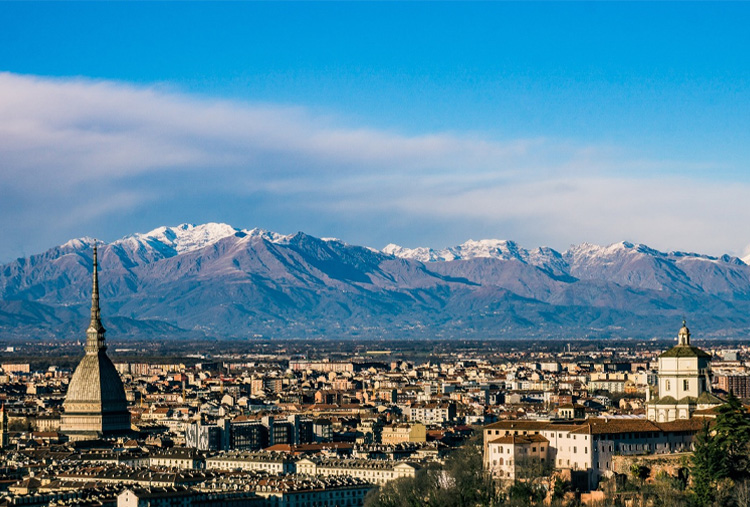
FT5. Tourinstones, field trip in a stone town
L'escursione partirà alle ore 17.30 del 19 settembre da piazza CLN, presso le due fontane.
Field leader(s): Francesca Lozar [Università di Torino], Alessandro Borghi [Università di Torino], Anna d'Atri [Università di Torino], Elena Storta [Università di Torino], Elena Egidio [Università di Torino]
Itinerary: The tour develops in the city center.
Date: 19 September 2022
Duration: 17.30 - 20.00
Costs (all included): € 10
The links among construction stone materials, their geographical provenance, geological origin, physical and chemical properties, and the architecture and history of a city are very interesting topics that need to be highlighted and explained to both students and tourists. This urban field trip consists of a geo-touristic walking-tour in Torino, from CLN square to the city center, focusing on historical and architectural aspects of the buildings as well as the geological features of the building materials. A variety of Alpine rocks used in palaces and historical monuments for both esthetic and structural reasons is displayed to the participants. In Torino, the itinerary moves towards the city center discovering the different types of ornamental stones (mainly metamorphic rocks) employed in buildings and monuments. For some of the stops, a detailed geologic description is also available through the application for mobile phones "TOURinSTONE". This application includes descriptions of 26 sites of historical and scientific interest and provides information on the stone materials, including petrographic and mineralogical description and location of the historical quarries. The technical-scientific study of materials, its simplification and dissemination, the combination with the cultural aspect and the territory represent a new way of doing research and develop the link between geosciences, geomaterials and our soustainable future.